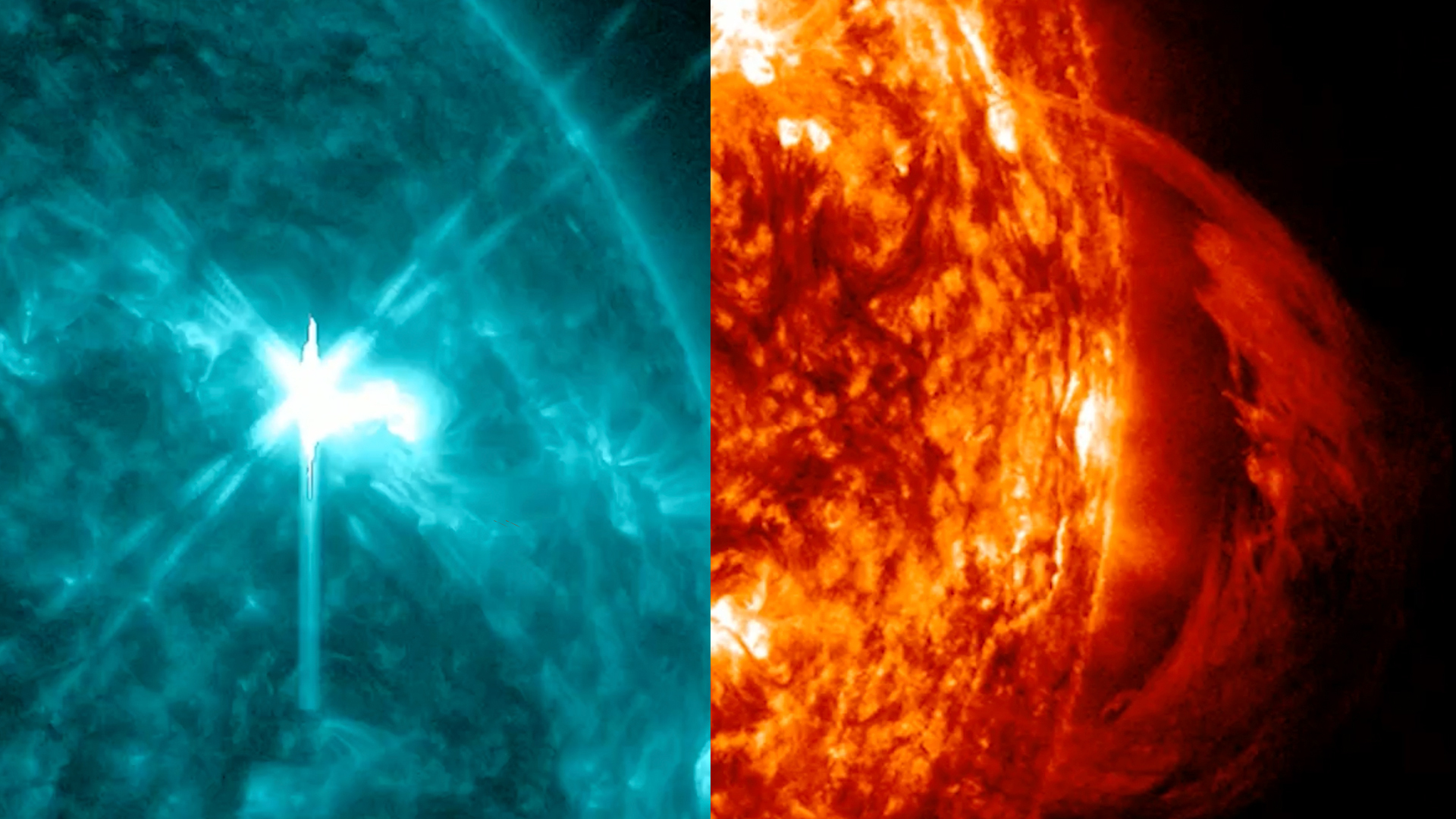
SpaceX needs to figure out what happened on the ninth test flight of its Starship megarocket, the U.S. Federal Aviation Administration (FAA) has decreed.
Flight 9, which lifted off from SpaceX's Starbase site in South Texas on Tuesday (May 27), ended in the destruction of both of Starship's stages — its Super Heavy booster and Ship upper stage (which is also sometimes known, somewhat confusingly, as Starship).
But the FAA, which grants launch licenses for U.S. operators, is only concerned about one of those explosive events.
"The mishap investigation is focused only on the loss of the Starship vehicle, which did not complete its launch or reentry as planned," FAA officials wrote in an update today (May 30).
"The FAA determined that the loss of the Super Heavy booster is covered by one of the approved test induced damage exceptions requested by SpaceX for certain flight events and system components," the agency explained. "The FAA evaluated each exception prior to launch approval and verified they met public safety requirements."
SpaceX broke new ground on Flight 9, reusing a Super Heavy for the first time ever. This particular booster first flew on Flight 7 in January, acing its engine burn and then returning to Starbase for a successful and dramatic catch by the launch tower's "chopstick" arms.
The company did not attempt another catch on Flight 9. It conducted a variety of experiments with the booster, including bringing it down to Earth on a higher "angle of attack" to increase atmospheric drag.
Breaking space news, the latest updates on rocket launches, skywatching events and more!
So, for safety's sake, SpaceX steered Super Heavy toward a "hard splashdown" in the Gulf of Mexico on Tuesday. This didn't quite work out, however.
"Contact with the booster was lost shortly after the start of landing burn when it experienced a rapid unscheduled disassembly approximately 6 minutes after launch, bringing an end to the first reflight of a Super Heavy booster," SpaceX wrote in a Flight 9 recap.
Ship had an even harder time on Flight 9. The upper stage was supposed to make a soft splashdown in the Indian Ocean off the coast of Western Australia about 65 minutes after launch, but it suffered an "attitude control error" that prevented the vehicle from getting into the proper orientation for reentry.
"Starship then went through an automated safing process to vent the remaining pressure to place the vehicle in the safest condition for reentry," SpaceX wrote in the recap. "Contact with Starship was lost approximately 46 minutes into the flight, with all debris expected to fall within the planned hazard area in the Indian Ocean."
This was still a considerable improvement over Ship's performance on its previous two liftoffs. On both Flight 7 and Flight 8 (which launched in March), Ship was lost less than 10 minutes after liftoff, raining debris down over the Atlantic.
There have been no reports of injuries or damage to public property as a result of the Flight 9 mishap, according to the FAA. There were also minimal effects on flights in U.S. airspace — an improvement over the previous two Starship launches.
"The FAA activated a Debris Response Area, out of an abundance of caution, when the Super Heavy booster experienced its anomaly over the Gulf of America during its flyback toward Texas," FAA officials wrote.
"The FAA subsequently determined the debris did not fall outside of the hazard area," they added. "During the event, there were zero departure delays, one flight was diverted, and one airborne flight was held for 24 minutes."
Join our Space Forums to keep talking space on the latest missions, night sky and more! And if you have a news tip, correction or comment, let us know at: community@space.com.

Michael Wall is a Senior Space Writer with Space.com and joined the team in 2010. He primarily covers exoplanets, spaceflight and military space, but has been known to dabble in the space art beat. His book about the search for alien life, "Out There," was published on Nov. 13, 2018. Before becoming a science writer, Michael worked as a herpetologist and wildlife biologist. He has a Ph.D. in evolutionary biology from the University of Sydney, Australia, a bachelor's degree from the University of Arizona, and a graduate certificate in science writing from the University of California, Santa Cruz. To find out what his latest project is, you can follow Michael on Twitter.
You must confirm your public display name before commenting
Please logout and then login again, you will then be prompted to enter your display name.
